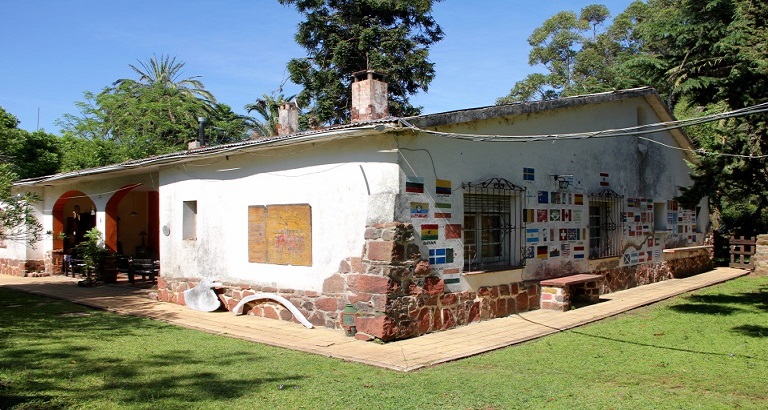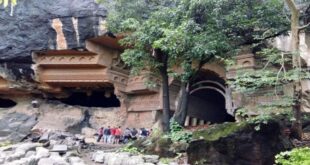One of the great mysteries of the world to me will always be why there aren’t hundreds of tourists flocking daily to the Qing Tombs, outside of Beijing. Until someone explains this phenomenon to me, I’ll be adding this one right under Roswell or how the Egyptian pyramids were built in my “I really don’t get it” list.
The Eastern Qing Tombs are amongst the finest, best-preserved and largest of the extant tomb complexes in China
To be honest, the reason why people don’t seem to include these tombs in their itineraries is as much of a mystery as a blessing for the selfish person in me, who, thanks to that, got to have a quiet stroll around the tombs and admire its magnificence without being shoved by groups wanting to get photos of every little detail.
None of the Beijing guides I had with me mentioned the Qing Tombs and the only reason we heard of them was, as it so often happens, through Geocaching Maybe it is because getting to the tombs themselves is such a mission and travellers have to find their way themselves (which is a great challenge in China, when you don’t speak the language). Or maybe it is because, to get there, you have to see a not-so-pretty (but pretty real) part of China. In any case, the fact that it is not part of the mainstream tourist route seems to be as much of a cause as a consequence of the lack of visitors.
The Qing Tombs, a UNESCO World Heritage site, are divided between two locales, equidistant to the east and west of the city of Beijing. The eastern Tombs are the most impressive and that’s where we headed to.
Five emperors, 15 empresses, 136 concubines, three princes and two princesses
We started early on our first full day in Beijing, knowing that we’d have a real challenge on our hands. From our hotel near Tiananmen Square, we took the subway to a main bus station where, after much struggle to understand and be understood, we managed to explain where we wanted to go to. It was clearly not a place for us, non Chinese-speakers to be at, as not even the lady at the information desk spoke any English.
We were given bus tickets and shown the way to the bus, where we were greeted by a middle-aged Chinese driver that was getting great enjoyment out of the fact that we could not understand a word he was saying. We sat close to him, hoping that he knew where we wanted to get off the bus.
Three hours, 115 kilometres and countless bumps later, the driver pointed us the way out of the bus. We were deep in rural China, in Zunhua County, Hebei Province, and it didn’t look like we were anywhere near an historical place. A young guy sitting inside a three-wheeler told us to get in after we showed him the Chinese characters that make up the name of the tombs. Eventually, after many “I speak English, you speak Chinese, I hand you money, you take me where I need to get to” discussions, the young guy took us to the Tombs.
Qing Dynasty covers the last feudal empire in China (1644-1911)
Access to the tombs cost us ¥120, a bargain considering the number of monuments that you can visit in the 80 square kilometre mausoleum. There were maybe a handful of people visiting the tombs, all of them domestic tourists, who looked at us surely wondering what we were doing there.
So what were we doing there? We were soaking up the centuries of history while visiting the tombs of nothing less than five emperors, 15 empresses, 136 concubines, three princes and two princesses. We got to visit Dowager Cixi’s tomb (if you don’t know who I’m talking about, get The Last Emperor out on DVD tonight), an impressive work of architecture that she designed for herself (because she was not happy with the tomb that had already been built for her) and learnt quite a bit about her years ruling China behind the curtains. This is one of the most complex and best preserved mausoleums in the whole of China. Some of the tombs are open and you can even see the sarcophagus (Dowagers Cixi’s sarcophagus is one of them).
A great red gate marks the entrance to the mausoleum and shortly after that, a long road filled with sculptures of guardian figures on both sides seals the path to the first and most important tomb – the one of Emperor Shunzhi, the first to rule China during the Qing dynasty. The road was built with marble and ends near an impressive stone bridge, leading to the Gate of Eminent Favour, the entrance to the tomb.
The tombs of empresses and concubines are placed alongside those of their husbands, clearly showing the master-subject relationship that they had in life
Nothing was left to chance when building the mausoleum. The emperors’ tombs are aligned with those of each one’s concubines and empresses. All emperors’ tombs are aligned with the tomb of Emperor Shunzhi in a pattern that displays the place each one of them took in the family hierarchy.
The visit to the tombs took a whole day and, if in the beginning, I had my doubts about whether they would be worth spending a day at, the doubts vanished when I found myself witnessing the magnificence of the mausoleum and realised how much that visit was teaching me about the Chinese culture.
Conclusion
The bus ride back to the city was far from uneventful, with sick screaming children, a chatty Chinese man who didn’t let his limited English and my inexistent Mandarin stop us from conversing, metal seats with no covers, and the pride of having just lived a really enjoyable adventure. We could not figure out why there aren’t many people visiting the tombs but we did figure out one thing: if we had chosen to ignore this place during our travel plans, we would have bypassed a very important part of Chinese’s history and architecture.
 BESTCITYTRIPS
BESTCITYTRIPS




